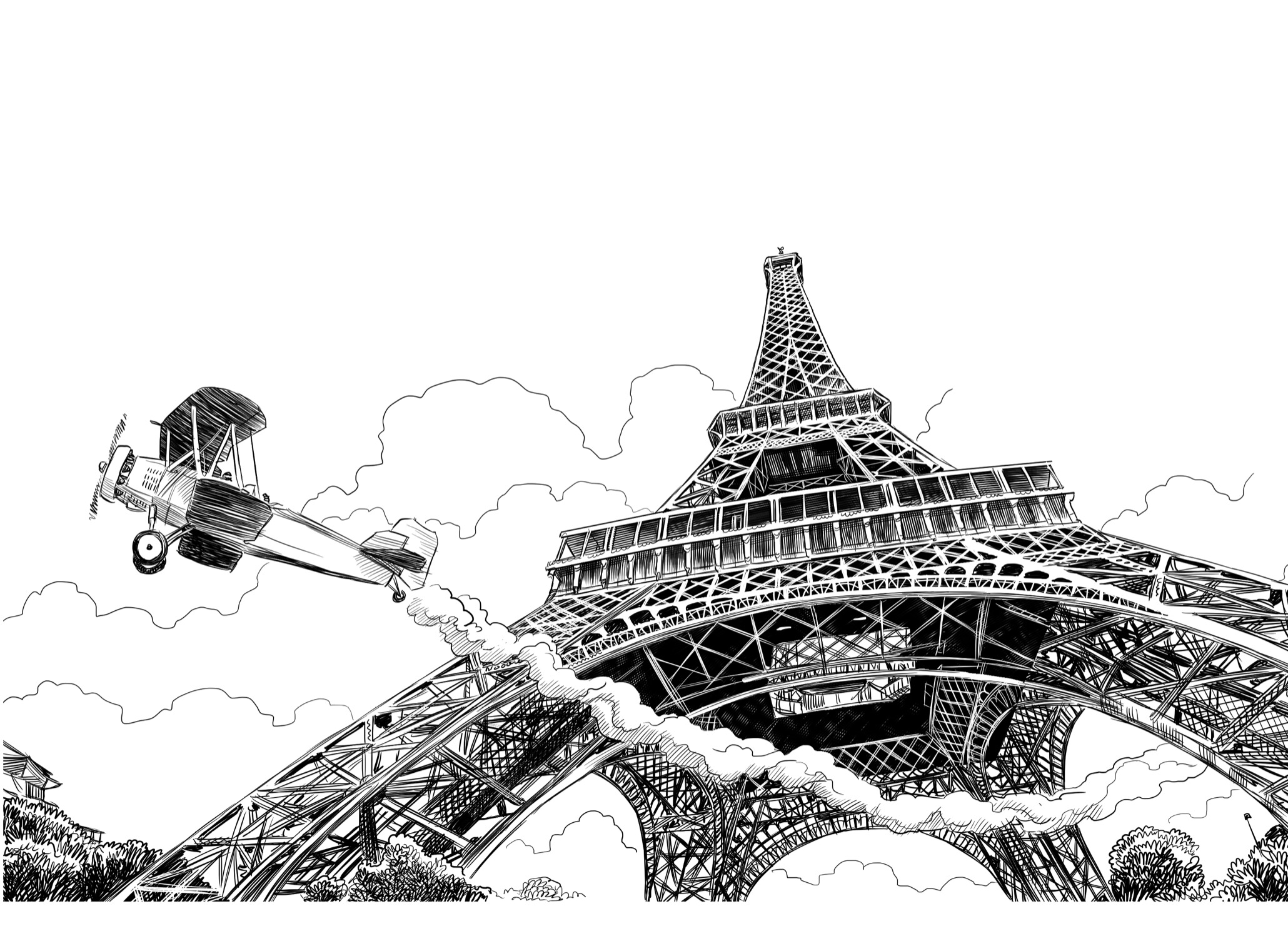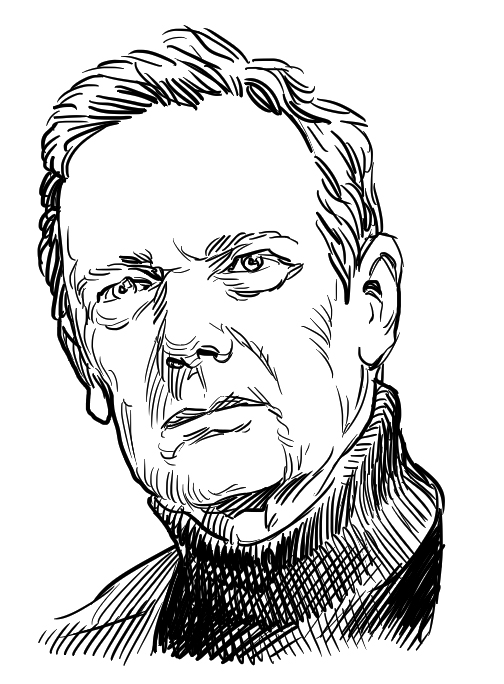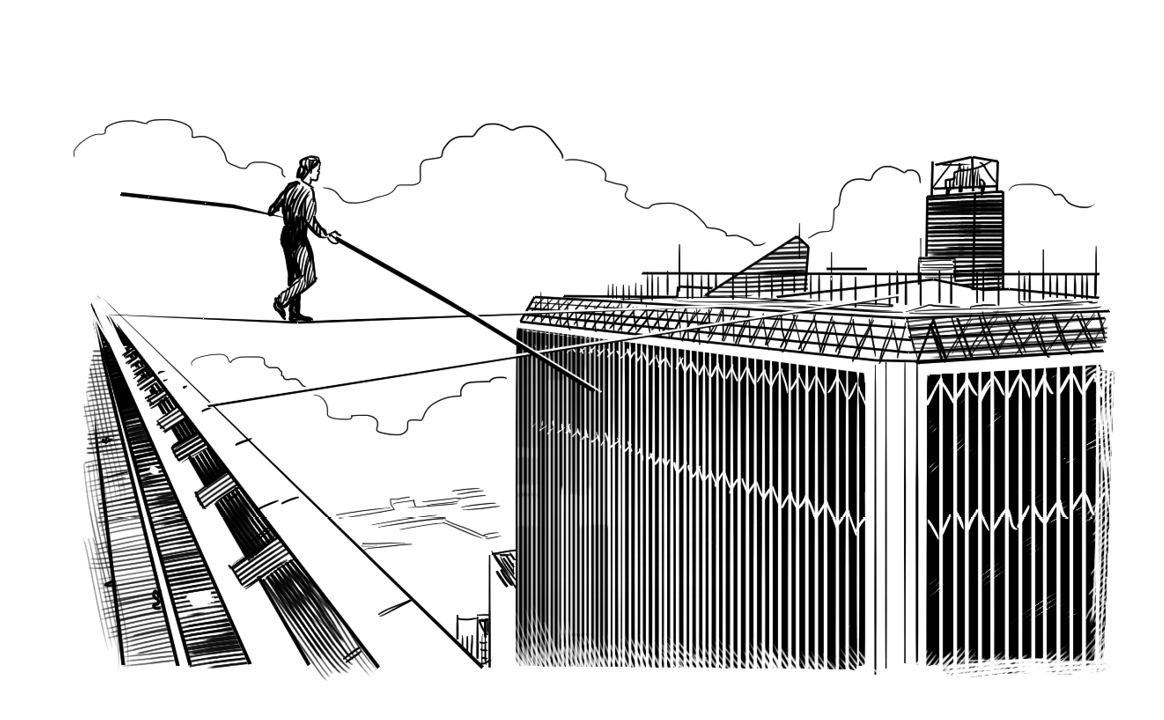CHAPTER 8
Can You Imagine?
Ever since the tower opened, people have looked up and thought about possibilities. Some were silly. Some were profound.
How fast can I run to the top? Is it possible to ride down on a bicycle? How would it feel to parachute off something so high? Can I make it all the way up the iron girders? Should I climb this way? That way? How would it feel to fly around or under it? And most important: If Gustave Eiffel could create something like this, then what can I do?
Sylvain Dornon, a French baker, climbed his way to fame. On September 9, 1891, he worked his way up 347 steps to the tower’s first level on stilts.

In 1901, a man named Alberto Santos-Dumont decided to become the first person to fly all the way around the tower. Planes had not yet been invented. It would be two years before Orville and Wilbur Wright’s first powered flight. Santos-Dumont flew in a hot-air balloon and won a prize of one hundred thousand French francs from a rich businessman.
As time passed, the stunts grew more dangerous. Too many failed, so laws were made. No jumping allowed! No flying near the tower! No climbing the metal pieces!
Did that stop the daredevils?
No!

In 1912, a tailor designed and created a thick parachute suit that he hoped would save pilots if they fell or jumped from planes. He climbed the tower and jumped. It didn’t work, and he died.
In 1923, a Paris journalist rode his bike down the tower staircase. He survived and was arrested at the bottom.
As aviation advanced, several pilots flew small planes between the tower’s legs.
In 1987, a man from New Zealand bungee-jumped from the second floor.
But perhaps the most famous daredevil of all was Philippe Petit, a world-class tightrope walker. On August 26, 1989, Petit stretched a 2,300-foot cable from the right bank of the Seine River to the second level of the Eiffel Tower on the left bank.

Philippe had been invited to perform his act by French president Jacques Chirac to celebrate the two hundredth anniversary of the French Republic. As thousands of spectators on both sides of the river watched, he walked up the cable. He was dressed in a red, green, and yellow skintight suit. He carried a long pole to balance himself. At the end of his walk, as he stepped onto the tower, he was greeted by President Chirac.
Philippe Petit (1949–)

